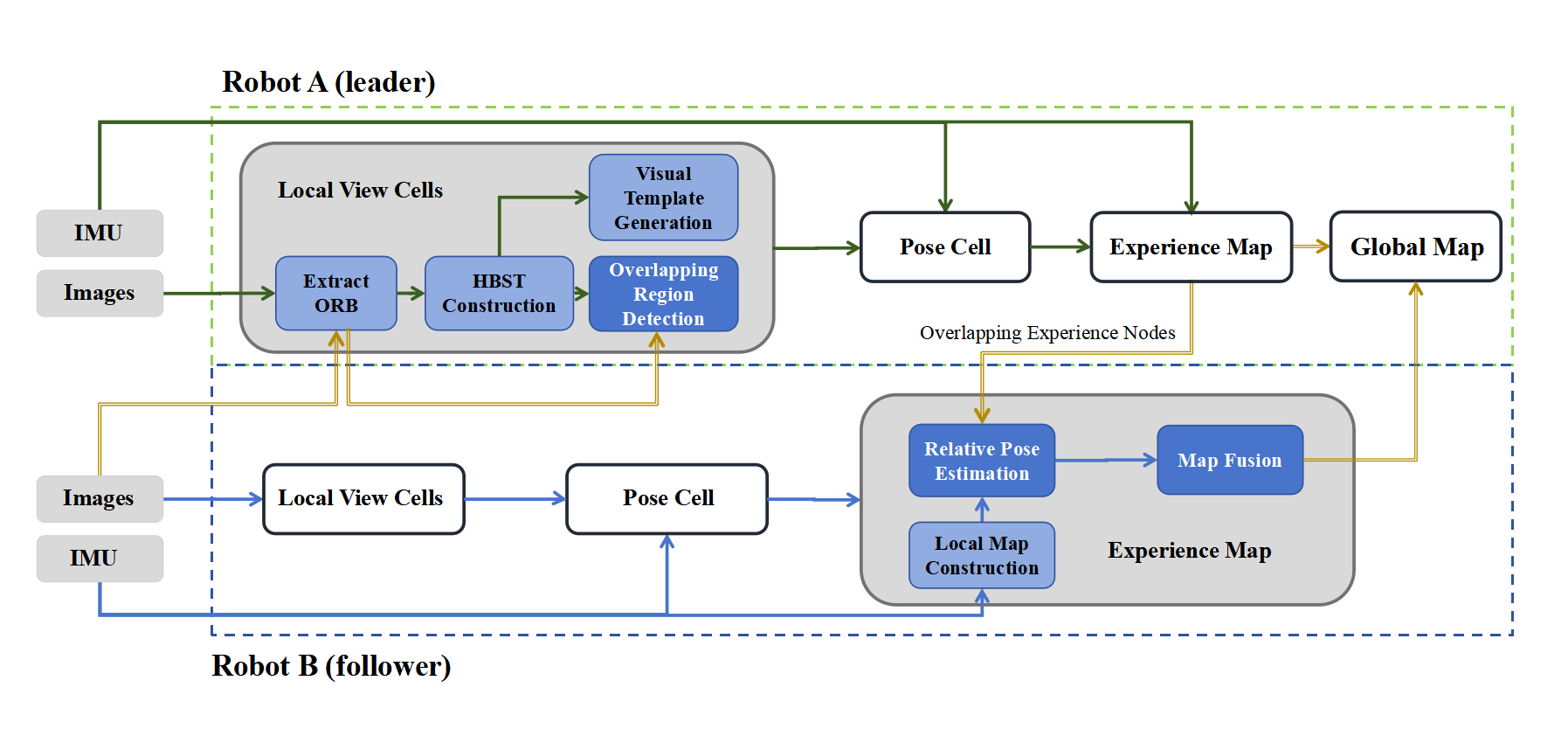
System Architecture Diagram (Image by the research group)
Brain-inspired navigation is an intelligent technology that mimics the way biological neural systems process spatial information. By drawing inspiration from navigation mechanisms in mammalian brains—such as place cells and grid cells—it enables the development of novel autonomous navigation systems. Such systems typically exhibit low power consumption, high robustness, and strong capabilities in autonomous learning and adaptation, showing particular promise in complex, dynamic, or unknown environments.
However, the increasing size of the mapping environment raises the likelihood of failuresin map construction. Current brain-inspired navigation systems are largely limited to single-robot mapping and suffer from issues such as low fault tolerance and efficiency, which hinder their full potential.
To address these challenges, a research team from the Robotics Laboratory at the Shenyang Institute of Automation(SIA), Chinese Academy of Sciences(CAS), has proposed a real-time collaborative mapping system to fuselocal experience maps into the global map. The team introduced an effective overlapping region detection based on sequencematching is designed to realize data association between local experience maps. To achieve the fusion of local experience maps, they developed a continuous map fusion graph relaxation (CMF-GR), which utilizes mutual pose relationships to construct a global experience map. Additionally, a leader-follower multi-robot architecture was designed to validate the proposed approach.
The research team evaluated the method on multiple public datasets and in real-world environments, confirming its effectiveness. The resulting multi-robot brain-inspired navigation and localization system achieved mapping performance comparable to that of a single robot.
This research, titled A Collaborative Mapping System for a Brain-Inspired SLAM, has been published in IEEE Internet of Things Journal. Hangpiao Zhao, a postgraduate studentat SIA, served as the first author, and Researcher Fengzhen Tang as the corresponding author.